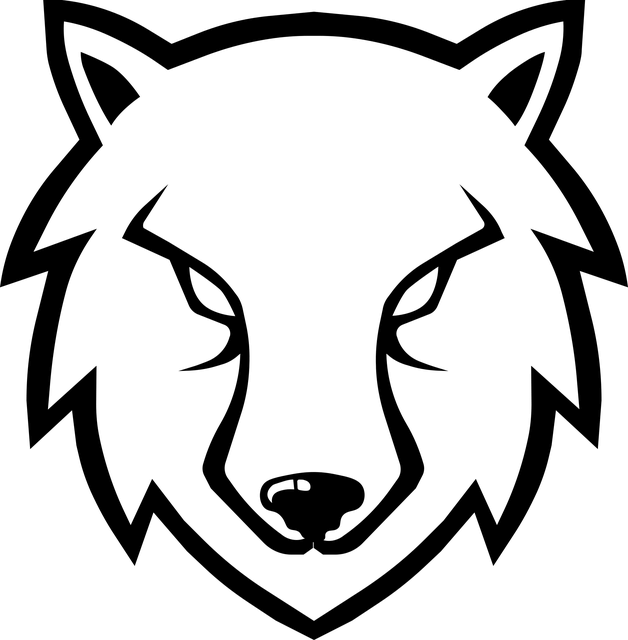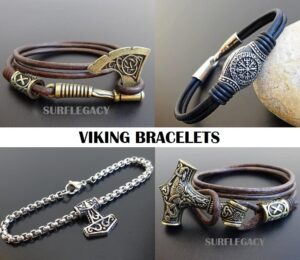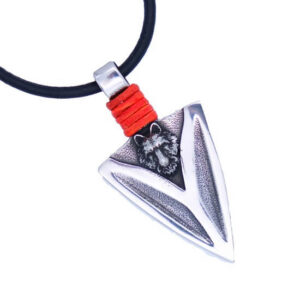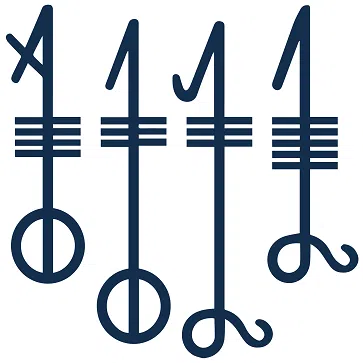The Viking Berserker Symbol is a powerful emblem that speaks to the fierce warrior spirit of the Vikings. It’s a symbol that’s been passed down through the ages, evoking images of battle-hardened soldiers donning animal pelts, ready to face their enemies with unrelenting ferocity.
Whether you’re a history buff or simply drawn to the striking design of the symbol, there’s no denying its enduring appeal.
In this blog post, we’ll take a deep dive into the origins, meaning, and significance of the Viking Berserker symbol, exploring its rich history and relevance in modern times.
So grab your horned helmet and let’s embark on a journey of discovery!
Definition of the Viking Berserker Symbol
The Viking Berserker symbol is a design often associated with the Berserker warriors of Viking culture. The symbol typically features an interlocking series of geometric shapes and animal motifs, including wolves, bears, and birds of prey.
The symbol is often depicted in bold, contrasting colors and is intended to convey the ferocity and strength of the Berserker warriors who wore it.
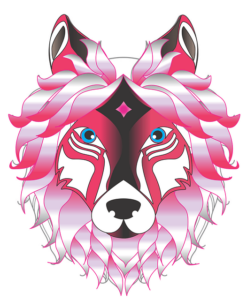
While the exact meaning and origins of the Viking Berserker symbol are still debated by historians and scholars, it remains an iconic emblem of Viking warrior culture to this day.
Importance of the symbol in Viking culture
The Viking Berserker symbol was an important part of Viking culture, particularly in relation to the Berserker warriors.
These warriors were known for their fierce fighting style and their ability to enter a state of uncontrollable rage or “berserkergang” in battle, which made them a formidable force on the battlefield.
The Berserker symbol was likely worn by these warriors as a way of signaling their status and prowess in battle, and as a means of intimidating their enemies.
The symbol was also closely linked to the idea of shapeshifting, which was a common belief in Viking mythology.
The Berserker warriors were believed to be able to transform into animals, such as wolves or bears, during battle, which made them even more fearsome opponents.
The use of animal motifs in the Berseker symbol may have been a nod to this belief and a way of invoking the power and spirit of these animals in battle.
In addition to its association with the Berserker warriors, the Viking Berserker symbol may have also had wider cultural significance.
It’s possible that the symbol was used in religious or spiritual contexts, and may have been associated with deities or beliefs related to protection, strength, and courage.
While much of the symbolism and meaning of the Viking Berserker symbol remains shrouded in mystery, its importance in Viking culture is undeniable.
Origins and History of the Viking Berserker Symbol
The origins and history of the Viking Berserker symbol are somewhat murky, as there are few written records from the Viking era that provide a clear picture of its meaning and significance.
However, historians and scholars have pieced together some information based on historical accounts, archaeological evidence, and the symbolism of other Viking artifacts.
The term “Berseker” itself is thought to have originated from the Old Norse word “berserkr,” which means “bear shirt” or “bear skin.”
This is likely a reference to the animal pelts that Berserker warriors would wear into battle, which were thought to imbue them with the strength and ferocity of the animals they represented.
Historical accounts suggest that Berserker warriors were a feared and respected force on the battlefield. They were said to enter into a state of uncontrollable rage, or “berserkergang,” in which they would fight with incredible strength and stamina, seemingly impervious to pain or injury.
The Berserker symbol may have been worn by these warriors as a way of signaling their status and prowess in battle, and as a means of intimidating their enemies.
The Berserker symbol is often depicted using animal motifs, including wolves, bears, and birds of prey. These animals were thought to be powerful symbols of strength, ferocity, and freedom in Viking culture, and may have been used to invoke the spirit and power of these animals in battle.
Symbolism of the Viking Berserker symbol
The symbolism of the Viking Berserker symbol is also reflected in Viking literature and mythology.
The sagas and myths of the Vikings often feature heroes who embody the qualities of the Berserker warriors, such as strength, courage, and ferocity.
These heroes are often depicted wearing animal pelts and invoking the power of the animals they represent.
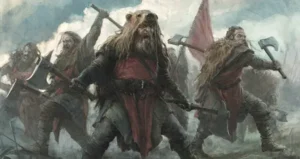
Despite the lack of concrete evidence about the origins and history of the Viking Berserker symbol, it remains an iconic emblem of Viking warrior culture to this day, evoking images of fierce and fearless fighters ready to face any challenge that comes their way.
Definition and meaning of “Berserker Warrior”
The term “Berseker” comes from Old Norse, with “ber-” meaning bear and “-serkr” meaning shirt or coat.
In Viking culture, a Berseker was a type of warrior who was known for their ferocity and battle prowess.
Berserkers were said to enter into a state of uncontrollable rage or “berserkergang” during battle, in which they fought with incredible strength and stamina, seemingly impervious to pain or injury.
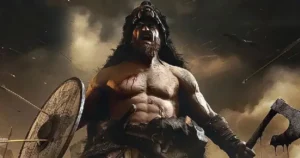
This state of frenzy was believed to be induced by the use of drugs or alcohol, although this is debated by scholars.
The use of animal pelts, particularly those of bears, was also closely associated with Berserker warriors.
It was believed that wearing the pelt of a fierce animal would imbue the wearer with the strength and ferocity of that animal, making them even more formidable in battle.
The use of animal motifs in the Berseker symbol may be a nod to this belief and a way of invoking the power and spirit of these animals in battle.
Overall, the term “Berseker” is closely associated with the idea of a fierce and fearless warrior who embodies the qualities of strength, courage, and ferocity highly valued in Viking culture.
Historical accounts of the Berserkers
Historical accounts of the Berserkers are scarce, and much of what we know about them comes from Viking sagas and myths, which were often written centuries after the events they describe.
However, there are a few written accounts from the Viking era that provide some insight into the lives and practices of these fearsome warriors.
One of the earliest mentions of the Berserkers comes from the 9th-century poem “Hrafnsmál,” which describes a group of warriors who wore wolf-skins and fought with reckless abandon.
The poem suggests that these warriors were associated with the god Odin, who was said to have been a shapeshifter and a patron of warriors.
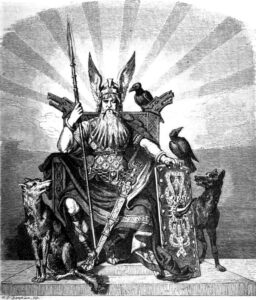
Odin
Later accounts describe the Berserkers as a group of elite warriors who were known for their ability to enter into a state of uncontrollable rage during battle.
They were said to be nearly invincible in this state, and were feared and respected by their enemies.
The use of drugs or alcohol to induce the berserkergang is also mentioned in some accounts.
It’s unclear exactly what substances were used, but some historians speculate that it may have been a type of mushroom or herbal concoction that had hallucinogenic or stimulant properties.
Despite their fearsome reputation, the Berserkers were not invincible, and many met their end on the battlefield.
Nevertheless, they were revered for their bravery and fighting spirit, and were celebrated in Viking sagas and myths as heroic figures who embodied the best qualities of Viking culture.
Berserker symbolism in Viking literature and mythology
Berserker symbolism is prevalent throughout Viking literature and mythology, where it is often used to represent the qualities of strength, courage, and ferocity that were highly valued in Viking culture.
Many of the heroes in Viking sagas and myths are portrayed as embodying these qualities, and are often associated with animal motifs that are similar to those used in the Berserker symbol.
One example of this is the character of Ragnar Lothbrok, a legendary Viking warrior and king who is featured in several sagas and poems.

Ragnar Lothbrok in Vikings
Ragnar is often depicted wearing a wolf-skin cloak and invoking the power of the wolf in battle, a clear reference to the Berserker symbol and the idea of using animal pelts to imbue oneself with the strength and ferocity of the animal.
Similarly, the god Odin is often associated with the Berseker symbolism, due to his association with warfare and his reputation as a shapeshifter.
In some myths, Odin is said to have taken on the form of a bear or a wolf to lead his warriors into battle, an image that is reminiscent of the animal motifs used in the Berseker symbol.
In addition to these specific examples, the Berserker symbolism is also used more broadly throughout Viking literature and mythology to represent the qualities of courage and strength in battle.
The idea of entering into a state of uncontrollable rage, or berserkergang, is often depicted as a way of tapping into these qualities and unleashing one’s full potential as a warrior.
Depiction of the Viking Berserker Symbol
The design of the Berseker symbol can vary, but it typically features an animal motif, such as a bear or a wolf, that is associated with the qualities of strength and ferocity that were valued in Viking culture.
The animal is often depicted in a stylized, abstract way, with sharp lines and geometric shapes that convey a sense of power and aggression.
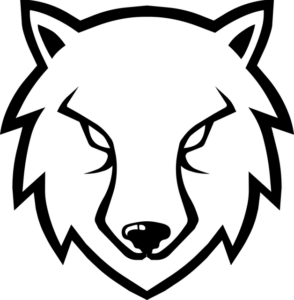
In some versions of the symbol, the animal is shown with its jaws open or teeth bared, emphasizing its fearsome nature.
The use of negative space is also common, with the animal motif being set against a dark background to create a stark contrast and highlight its boldness.
The Berserker symbol is often used in jewelry and other decorative objects, and is typically rendered in materials such as silver or bronze.
The symbol may be worn as a pendant, bracelet, or other types of jewelry, serving as a talisman or a reminder of the qualities of strength and courage that it represents.
Interpretation and Meaning of the Viking Berserker Symbol
Common interpretations and meanings of the symbol
The Viking Berserker symbol has various interpretations and meanings, including:
- Strength and Power: The symbol represents the immense strength and power of the Viking berserkers in battle, as they were known to be fierce and relentless warriors.
- Fearlessness and Courage: The symbol is also a representation of the fearlessness and courage of the Viking berserkers, who were known to charge into battle without fear of death or injury.
- Protection: The animal motifs associated with the Berseker symbol, such as the bear and boar, are also seen as symbols of protection and defense.
- Frenzy and Madness: The symbol can also be interpreted as a representation of the frenzied and mad state that the berserkers were said to enter during battle, which gave them supernatural strength and endurance.
- Transformation: The symbol can also represent transformation, as the berserkers were believed to undergo a transformation or ritual before battle, where they would don animal hides or shirts to embody the strength and ferocity of the animal.
The Berserker symbol is a powerful representation of the Viking warrior culture and their fearlessness in battle.
Its meaning and interpretation can vary depending on the context and culture in which it is viewed.
Connection between the symbol and Viking warrior culture
The symbolism of the animal motifs is often associated with the Berserker symbol
The animal motifs often associated with the Berseker symbol, such as the bear, wolf, or boar, have significant symbolic meanings in Viking Mythology.
These animals were seen as powerful symbols of strength, courage, and ferocity. The berserkers were believed to embody the strength and ferocity of these animals, which is why they wore animal hides or shirts into battle.
The symbolism of the bear, in particular, is closely linked to the Viking berserkers.
The bear was seen as a symbol of strength, power, and ferocity, and was often used to represent the warrior spirit of the berserkers.
The bear was also believed to be a protective animal, which is why the berserkers wore bear hides or shirts into battle.
Use and Significance of the Viking Berserker Symbol Today
Modern interpretations and uses of the symbol
The Berserker symbol continues to have significance in modern times, particularly among those who are interested in Norse mythology and Viking culture.
Some modern interpretations and uses of the symbol include:
- Tattoo Art: The Berseker symbol is a popular choice for tattoo art, particularly among those who want to embody the strength, courage, and ferocity of the Viking berserkers.
- Jewelry: The symbol is also used in jewelry design, particularly in the form of pendants, rings, and bracelets, as a talisman or totem to invoke the warrior spirit of the berserkers.
- Clothing and Apparel: The Berseker symbol is often used in clothing and apparel, particularly among those who are interested in Viking culture and want to display their admiration for the warrior spirit of the berserkers.
- Sports Teams: The Berseker symbol is sometimes used as a mascot or emblem for sports teams, particularly those that want to convey a sense of strength, courage, and ferocity.
- Spiritual and Philosophical Practices: The Berseker symbol is also used in spiritual and philosophical practices, particularly among those who are interested in Norse mythology and Viking spirituality, as a symbol of transformation, strength, and protection.
Final Thoughts
The importance of preserving Viking cultural heritage and symbols
The Viking Age, which spanned from the 8th to the 11th century, was a significant period in European history. The Vikings were skilled seafarers, traders, and warriors who left an indelible mark on the cultural and historical landscape of the countries they visited, conquered, or traded with.
The preservation of Viking cultural heritage and symbols is important for several reasons.
First, it helps us understand and appreciate the rich and complex history of the Viking Age. By preserving Viking artifacts, we can learn about their way of life, beliefs, customs, and traditions. This knowledge helps us understand our past and informs our present.
Second, Viking cultural heritage and symbols are a valuable part of the cultural heritage of many countries, including Norway, Denmark, Sweden, Iceland, and the United Kingdom. By preserving these cultural artifacts and symbols, we are preserving a part of our shared history and identity.
Third, Viking cultural heritage and symbols have significant economic and tourism value. Many people are interested in learning about the Vikings and visiting museums, historic sites, and cultural events that celebrate their legacy. By preserving Viking cultural heritage and symbols, we can promote tourism and support local economies.
Finally, preserving Viking cultural heritage and symbols can also be a way of celebrating diversity and promoting inclusivity. The Vikings traveled and traded extensively, interacting with people from different cultures and backgrounds. By preserving their legacy, we can celebrate the diversity of our shared history and promote understanding and tolerance between different cultures.
In conclusion, the preservation of Viking cultural heritage and symbols is essential for understanding our past, celebrating our cultural heritage, promoting tourism, and promoting inclusivity and diversity.

